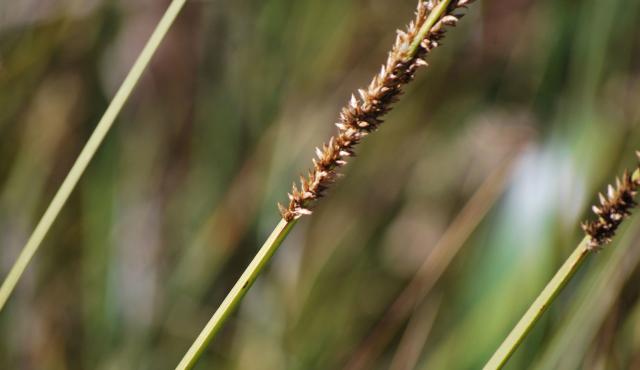

Tall Sedge
Carex appressa
Dense tough tufted sedge to 1.2 m. Bright yellow-green leaves up to 1 m long and 6 mm wide, with finely serrated sharp edges and an arching habit. The stems are triangular with finely serrated edges. Narrow spikes of brownish-yellow flowers, male flowers always at the top of the spike
| Details | |
|---|---|
| Flora Type | Sedges, rushes |
| Distinctive Features | The flowering stems are triangular in cross-section, and the foliage yellowish-green. Flowers are flattened against the stem. Stems and leaves similar length. |
| Biology | Perennial. Moist seasonally wet heavy clay soils tolerating periodic inundation in a range of habitats. |
| Native Status | Native |
| Flowering Time | Aug-Jan |
| Taxonomy | |
|---|---|
| Phylum | Tracheophyta (Vascular Plants) |
| Class | Magnoliopsida (Flowering Plants) |
| Order | Poales |
| Family | Cyperaceae |
| Genus | Carex |
| Species | appressa |
The stem of Carex species was used for making string and baskets by Aboriginal people. Source of food for caterpillars, nectar for butterflies, shelter for frogs and nesting material for birds. May harbour native Swamp Rats and nesting Rails and provide foraging sites for Crakes.
| Interesting Facts | |
|---|---|
| Similar Species | Varies from C. tereticaulis in its yellow-green triangular leaves rather than round smooth blue-green leaves. |
| Native Status | Native |